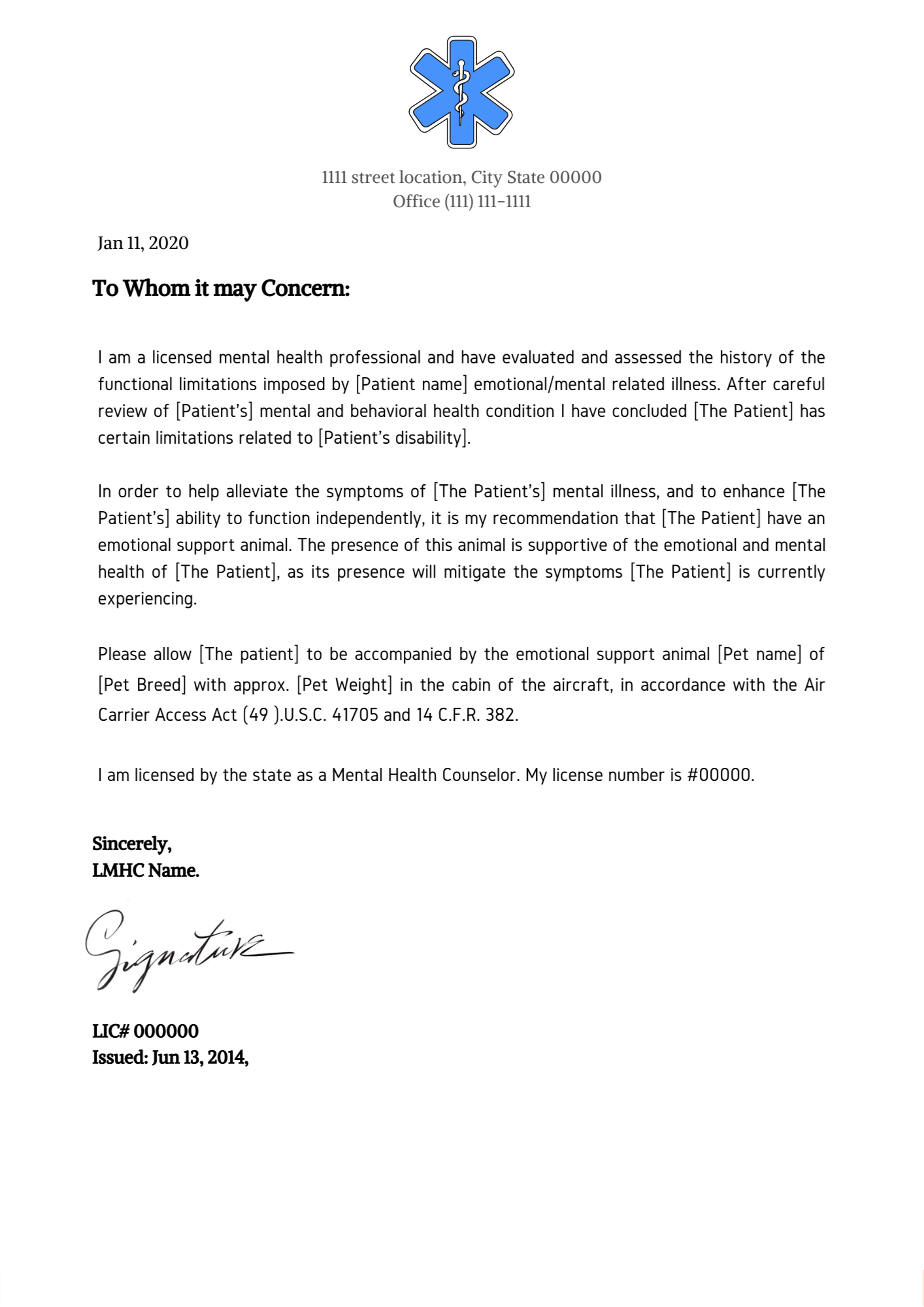How to Obtain Emotional Support Animal Documentation Easily

When navigating the complexities of managing mental health or physical disabilities, an emotional support animal (ESA) can be an invaluable source of comfort and support. ESAs provide therapeutic benefits to their handlers, but to legally recognize your pet as an ESA, you need to secure the appropriate documentation. Here's a detailed guide to make the process of obtaining ESA documentation as smooth and straightforward as possible.
Understanding What Makes an Animal an ESA

Before embarking on the journey to get documentation, it’s crucial to understand what qualifies an animal as an ESA. Unlike service animals, ESAs do not require specialized training. Instead, they provide:
- Companionship
- Emotional stability
- Reduction in symptoms of mental health issues like anxiety, depression, or PTSD
Eligibility for an ESA

To be considered eligible for an ESA:
- You must have a mental or emotional disability recognized by the DSM-5.
- This disability must significantly limit one or more major life activities.
- Your health provider should recommend an ESA to alleviate your condition’s symptoms.
Steps to Obtain ESA Documentation

Step 1: Consultation with a Mental Health Professional

The first step is to speak with a licensed mental health professional (LMHP). This can be:
- A psychiatrist
- A psychologist
- A licensed clinical social worker (LCSW)
- A licensed professional counselor (LPC)
🚨 Note: Your therapist should be knowledgeable about ESA laws and regulations to ensure proper documentation.
Step 2: Mental Health Evaluation

During this session, your provider will assess:
- The nature of your disability
- How an ESA could help alleviate your symptoms
This can be done in person or through telehealth services, which have become increasingly common and accessible.
Step 3: ESA Letter

After evaluation, if your provider agrees that an ESA will benefit your mental health:
- They will provide you with an ESA letter.
- This letter should be written on the provider’s letterhead, include their license details, and describe your need for an ESA.
Key Elements of an ESA Letter

An effective ESA letter should include:
- Your diagnosis or the nature of your disability.
- A statement that your condition significantly impacts your daily life.
- An explicit recommendation for an ESA to mitigate the symptoms of your condition.
- The date, the provider’s contact information, and the signature.
📄 Note: Ensure that the letter follows the guidelines of the Fair Housing Act (FHA) and the Air Carrier Access Act (ACAA) for legal recognition as an ESA.
The Role of Online Services

Online platforms can simplify the process of obtaining ESA documentation by connecting you with:
- Certified mental health professionals.
- Resources for finding a qualified therapist.
- Tools for generating letters that comply with ESA laws.
Advantages of Online Services

- Convenience: Online consultations eliminate travel and wait times.
- Accessibility: You can get help from professionals regardless of your location.
- Cost Efficiency: Often, these services are more affordable than traditional in-person sessions.
Common Misconceptions and Legal Considerations

It’s important to understand:
- ESAs vs. Service Animals: ESAs have different legal protections and do not need specific training.
- Public Access Rights: While ESAs are not allowed in most public spaces, they have specific housing rights.
🏠 Note: Housing providers must make reasonable accommodations for ESAs under the FHA.
Maintaining Your ESA Documentation

ESA documentation:
- Should be updated regularly, typically every year, or as your health condition changes.
- Is required when seeking housing accommodations or for airline travel.
Summing Up Your Journey

Embarking on the process to acquire ESA documentation involves several critical steps, from consultation with mental health professionals to securing the official letter. This guide outlines how to navigate this journey efficiently, ensuring that your emotional support animal can provide the needed comfort and legal recognition in your living and travel arrangements. Understanding the eligibility criteria, securing the right documentation, and leveraging online services can streamline this process, making it less daunting and more accessible.
What qualifies an animal as an Emotional Support Animal?

+
An animal qualifies as an Emotional Support Animal (ESA) if a licensed mental health professional determines that the animal provides emotional support or mitigates symptoms of a person’s disability, thus improving their mental health.
Do I need to train my pet to become an ESA?

+
No formal training is required for an animal to be considered an ESA. Unlike service animals, which are trained to perform specific tasks, ESAs provide support through their presence.
Can any mental health professional write an ESA letter?

+
Yes, but the professional must be licensed and knowledgeable about ESA laws. This includes psychologists, psychiatrists, LCSWs, or LPCs.